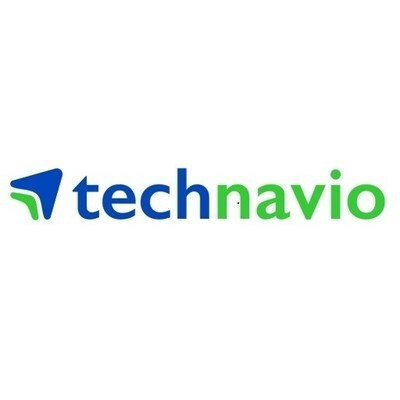NEW YORK, June 25, 2024 /PRNewswire/ — The global aluminum scrap recycling market size is estimated to grow by USD 4.35 billion from 2024-2028, according to Technavio. The market is estimated to grow at a CAGR of over 11.37% during the forecast period. Growing concerns over energy consumption and environmental pollution is driving market growth, with a trend towards introduction of libs and solid-state recycling in aluminum scrap recycling. However, decrease in recycling rate of used beverage cans poses a challenge. Key market players include Alcoa Corp., CASS Inc., Chiho Renewable Development Ltd., Commercial Metals Co., Constellium SE, Crestwood Metal Corp., European Metal Recycling Ltd., Hindalco Industries Ltd., Koch Enterprises Inc., Kuusakoski Oy, Metal Exchange Corp., Norsk Hydro ASA, Nucor Corp., Real Alloy, RETHMANN SE and Co. KG, Rio Tinto Ltd., Sims Ltd., Steel Dynamics Inc., Triple M Metal LP, and Ye Chiu Metal Recycling China Ltd..
Get a detailed analysis on regions, market segments, customer landscape, and companies – Click for the snapshot of this report
|
Forecast period |
2024-2028 |
|
Base Year |
2023 |
|
Historic Data |
2018 – 2022 |
|
Segment Covered |
End-user (Casting and Downstream), Type (Old scrap and New scrap), and Geography (APAC, North America, Europe, Middle East and Africa, and South America) |
|
Region Covered |
APAC, North America, Europe, Middle East and Africa, and South America |
|
Key companies profiled |
Alcoa Corp., CASS Inc., Chiho Renewable Development Ltd., Commercial Metals Co., Constellium SE, Crestwood Metal Corp., European Metal Recycling Ltd., Hindalco Industries Ltd., Koch Enterprises Inc., Kuusakoski Oy, Metal Exchange Corp., Norsk Hydro ASA, Nucor Corp., Real Alloy, RETHMANN SE and Co. KG, Rio Tinto Ltd., Sims Ltd., Steel Dynamics Inc., Triple M Metal LP, and Ye Chiu Metal Recycling China Ltd. |
Key Market Trends Fueling Growth
The aluminum scrap recycling market is experiencing significant growth due to advancements in recycling technologies. Notable among these are solid-state recycling and laser-induced breakdown spectroscopy (LIBS). LIBS uses a laser pulse to detect and evaluate the abundance of elements in scrap, ensuring purity. Solid-state recycling mechanically crushes and chemically cleans aluminum parts for recycling, reducing energy consumption and environmental impact. These innovations are increasing the extent of aluminum recycling, making it a cost-effective and sustainable solution for the global aluminum industry.
The Aluminum Scrap Recycling market is currently experiencing significant growth due to increasing demand for aluminum in various industries. Packaging, airlines, and construction sectors are major consumers of aluminum. The scrap recycling process is crucial in reducing the need for primary aluminum production, which is energy-intensive. The cost-effective nature of recycling aluminum scrap makes it an attractive option for businesses. The trend towards sustainability and circular economy is driving the market forward. Minals, aluminum, and scrap are key components in this industry. The US, China, and Europe are major players in the global Aluminum Scrap Recycling market. The scrap is collected, sorted, and transported to recycling facilities for processing. The recycled aluminum is then sold to manufacturers for use in new products. The market is expected to continue growing due to the continuous demand for aluminum and the environmental benefits of recycling.
Research report provides comprehensive data on impact of trend. For more details- Download a Sample Report
Market Challenges
- The aluminum scrap recycling market in North America is anticipated to experience a decrease in demand due to the declining beverage can industry. The consumption of carbonated soft drinks is decreasing as consumers shift towards healthier options like water and iced tea. Paperboard packaging is gaining popularity, leading to an increase in demand for this type of packaging. Major companies like Sabert and Tetra Pak are launching new paperboard packaging solutions. These trends are expected to negatively impact the aluminum scrap recycling market during the forecast period. Additionally, the moderate decline in the carbonated soft drinks market and downgauging of can thickness are further reducing the demand for aluminum cans, thereby affecting the market negatively. The fall in primary aluminum prices is another significant factor impacting market growth.
- The Aluminum Scrap Recycling Market faces several challenges. Duplicating the original properties of aluminum is a significant challenge in the recycling process. The process of separating aluminum from other materials in scrap can be complex and costly. The quality of the recycled aluminum can also vary, affecting its market value. Another challenge is the availability of high-quality scrap. Older scrap may contain impurities that can affect the quality of the recycled aluminum. Additionally, the cost of collecting and transporting scrap can be high, making it essential to have efficient and cost-effective methods in place. Moreover, the demand for primary aluminum can impact the market for recycled aluminum. When primary aluminum prices are low, the demand for recycled aluminum increases. Conversely, when primary aluminum prices are high, the demand for recycled aluminum decreases. Lastly, the use of advanced technologies, such as magnetic separation and eddy current separation, can help improve the quality of recycled aluminum and increase efficiency in the recycling process. However, the high cost of implementing these technologies can be a barrier for smaller recycling operations.
For more insights on driver and challenges – Download a Sample Report
Segment Overview
This aluminum scrap recycling market report extensively covers market segmentation by
- End-user
- 1.1 Casting
- 1.2 Downstream
- Type
- 2.1 Old scrap
- 2.2 New scrap
- Geography
- 3.1 APAC
- 3.2 North America
- 3.3 Europe
- 3.4 Middle East and Africa
- 3.5 South America
1.1 Casting- The casting segment dominates the aluminum scrap recycling market due to the high demand for cast aluminum products in industries like automotive, aerospace, construction, and consumer goods. Technological advancements in casting processes and the focus on sustainability drive market growth. Challenges include plant closures in some countries and the COVID-19 pandemic’s impact on demand. However, new technologies and resumed industries are expected to boost market growth.
For more information on market segmentation with geographical analysis including forecast (2024-2028) and historic data (2018 – 2022) – Download a Sample Report
Research Analysis
The Aluminum Scrap Recycling Market plays a significant role in the sustainable production of this essential metallic element. The Earth’s crust is rich in Aluminum (Al), making it a valuable resource for recycling. Malleability and ductility of Aluminum facilitate its recycling process, which involves sorting and purifying scrap Aluminum. Minerals, flora, and animals contribute to the extraction of raw Aluminum, while recycling reduces the need for new mining. Aluminum scrap recycling companies, such as Guidetti, Glencore, Gelting, China Metal Recycling, IMS Metal Management, Edoma Recycling, and others, employ advanced technologies to melt andolidify Aluminum. Aluminum is an important onferrous metal, and its recycling process is crucial for reducing the environmental impact and conserving resources. Ilicon, another etallic element, is also recycled using similar processes.
Market Research Overview
The Aluminum Scrap Recycling Market involves the collection, processing, and sale of scrap aluminum for reuse. This market plays a significant role in reducing the need for primary aluminum production and conserving natural resources. The process of aluminum scrap recycling includes sorting, shredding, melting, and remelting the scrap aluminum. The recycled aluminum can be used to manufacture various products such as automotive parts, building materials, and packaging. The global aluminum scrap recycling market is driven by factors such as increasing environmental awareness, rising demand for lightweight materials, and the availability of scrap aluminum from various industries. The market is also influenced by factors such as fluctuations in aluminum prices and advancements in recycling technologies.
Table of Contents:
1 Executive Summary
2 Market Landscape
3 Market Sizing
4 Historic Market Size
5 Five Forces Analysis
6 Market Segmentation
- End-user
- Casting
- Downstream
- Type
- Old Scrap
- New Scrap
- Geography
- APAC
- North America
- Europe
- Middle East And Africa
- South America
7 Customer Landscape
8 Geographic Landscape
9 Drivers, Challenges, and Trends
10 Company Landscape
11 Company Analysis
12 Appendix
About Technavio
Technavio is a leading global technology research and advisory company. Their research and analysis focuses on emerging market trends and provides actionable insights to help businesses identify market opportunities and develop effective strategies to optimize their market positions.
With over 500 specialized analysts, Technavio’s report library consists of more than 17,000 reports and counting, covering 800 technologies, spanning across 50 countries. Their client base consists of enterprises of all sizes, including more than 100 Fortune 500 companies. This growing client base relies on Technavio’s comprehensive coverage, extensive research, and actionable market insights to identify opportunities in existing and potential markets and assess their competitive positions within changing market scenarios.
Contacts
Technavio Research
Jesse Maida
Media & Marketing Executive
US: +1 844 364 1100
UK: +44 203 893 3200
Email: [email protected]
Website: www.technavio.com/
![]() View original content to download multimedia:https://www.prnewswire.com/news-releases/aluminum-scrap-recycling-market-size-is-set-to-grow-by-usd-4-35-billion-from-2024-2028–growing-concerns-over-energy-consumption-and-environmental-pollution-to-boost-the-market-growth-technavio-302181016.html
View original content to download multimedia:https://www.prnewswire.com/news-releases/aluminum-scrap-recycling-market-size-is-set-to-grow-by-usd-4-35-billion-from-2024-2028–growing-concerns-over-energy-consumption-and-environmental-pollution-to-boost-the-market-growth-technavio-302181016.html
SOURCE Technavio

Featured image: DepositPhotos © scanrail





